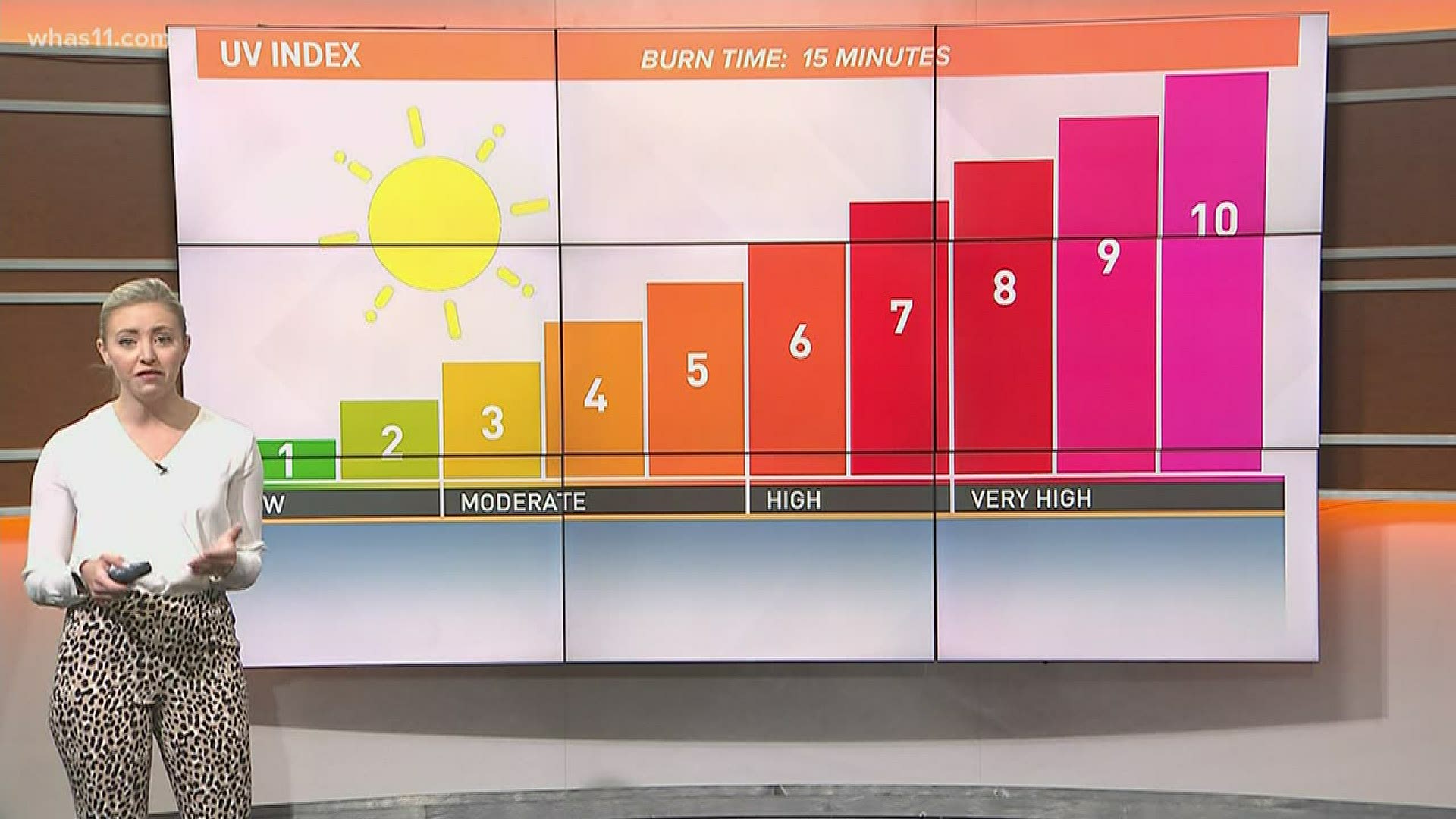LOUISVILLE, Ky. — As we get deeper into the spring season, we need to start thinking about the UV index.
It’s on the rise and so is the sun. The UV index stands for "the ultra violet light index," the international standard measurement of the strength of the sunburn producing ultra violet radiation at a particular time and place.
During the fall and winter season the sun angle, the sun’s height above the horizon is low, so the sun’s ray aren’t as strong and we have a low UV index. So, the UV index is often in the low or moderate range, and the need for sunscreen is much lower.
When spring arrives, we start to see the days grow longer and the sun angle higher.
So, you’ll hear us talk about the UV index in the high or very high range. many of us can get a sunburn in just 20-30 minutes in the high range, and within 15 minutes with a very high UV index.
Our summer days are often in this very high range.
So even in the spring, it may be time to think about appying sunscreen if you’re spending some time outside.
More from Weather Wise:
- Understanding cloud forms | Weather Wise
- Understanding different air masses | Weather Wise
- How temperature can affect our pets | Weather Wise
- How hot can a car get on a warm, sunny day? | Weather Wise
- Hurricane season is approaching - what you need to know | Weather Wise
- How does weather affect seasonal allergies? | Weather Wise
- What are Air Quality Alerts? | Weather Wise
- How does hail form? | Weather Wise
- The science of precipitation | Weather Wise Lessons
- High, low pressure systems; How do they work?
►Make it easy to keep up-to-date with more stories like this. Download the WHAS11 News app now. For Apple or Android users.
Have a news tip? Email assign@whas11.com, visit our Facebook page or Twitter feed.

